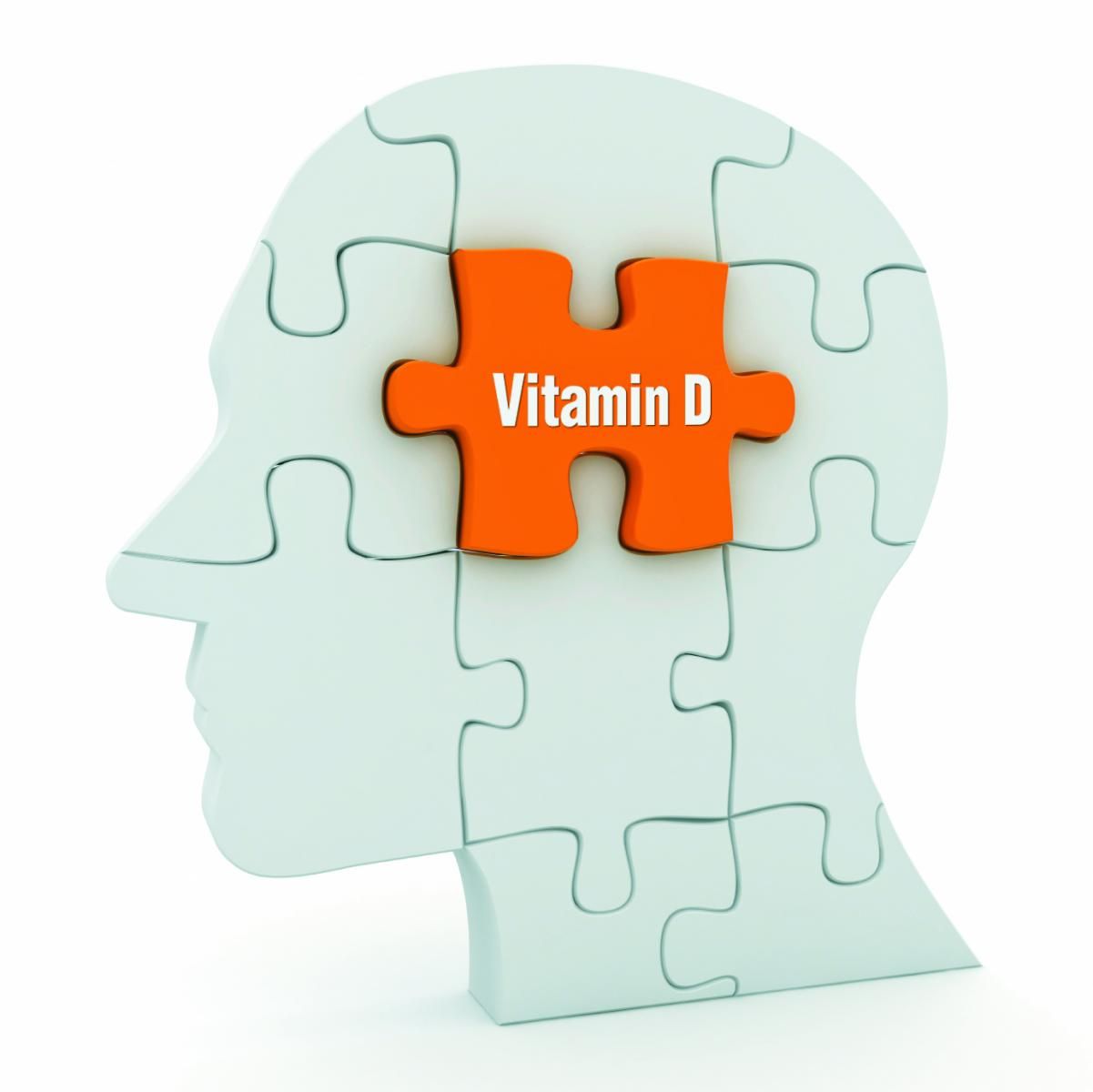Rethinking Relaxation Ingredients with New Combinations, Product Types
The relaxation dietary supplements market looks pumped with promising new ingredients and research.
Photo © iStockphoto.com/Belitas


Try as we might to keep cool, calm, and collected, stress is an unavoidable aspect of modern life. Between long working hours, excess caffeine consumption, and addictive digital devices disrupting sleep, it’s no surprise that many of the top ingredients for sleep and mood support have seen sales climb in the past year.
During the 12 months ending in October 2015, sales of U.S. mood-support supplements containing magnesium were up 26.3% over the previous year, mood-support gamma-aminobutyric acid (GABA) sales were up 16.7%, and mood-support ashwagandha sales were up 57.3%, according to SPINS.1 During the same period, sales of sleep supplements containing melatonin were up 19.6%, and sleep supplements containing valerian were up 6.9%.
But strong supplement sales isn’t the only exciting news for the relaxation market. New ingredient combinations and an increasingly varied range of product types are also changing the way consumers approach relaxation ingredients.
“Innovation has been very prevalent in the sleep aid industry,” says Ayako Homma, U.S. analyst, Euromonitor International. “Formulations are moving towards complex blends of botanicals, and delivery formats are increasingly creative, ranging from liquid concentrates and drops to oral film strips.”
A similar movement seems to be taking place within the mood-support sector of the relaxation market. Combine this shift in formulation trends with promising new ingredients and research, and the relaxation market actually looks pumped.
STORY CONTINUES ON PAGE 2
Beverages, Shots, Melts, and More
With so many new products launched in just the past few years, the range of product types marketed for relaxation is now impressively broad. Let’s start with stress relief.
Ashwagandha supplier Ixoreal Biomed (Hyderabad, India) says formulators have increasingly become aware of the stress-relieving potential of its KSM-66 brand ashwagandha, driving its presence in both new products and updated products.
8-12Hz neural chewing gum from Effectve, featuring KSM-66 ashwagandha, is meant to promote “relaxed alertness.”
“A major trend is that formulators incorporating ashwagandha have moved beyond capsules and tablets to using foods and beverages as delivery mechanisms,” says Kartikeya Baldwa, director, Ixoreal Biomed. “KSM-66 ashwagandha is now used in teas, energy drinks, bars, chewing gums, chocolates, and beverage add-on powders. This makes KSM-66 more accessible and easy to incorporate into one’s daily intake.”
Recently launched relaxation products featuring KSM-66 include 8-12Hz neural chewing gum from Effectve, Sinless functional dark chocolate from Allysian, Food of the Gods chocolate turmeric elixir from Spice Pharm, and the Rebbl ashwagandha chai elixir beverage, winner of BevNET’s 2015 Best Functional Beverage award.
Allysian’s Sinless functional dark chocolate includes KSM-66 ashwagandha.
Baldwa adds that a recently completed study may add further support for ashwagandha’s role in relaxation products. The yet-to-be-published study found ashwagandha may help reduce stress and stress-induced food cravings in moderately overweight adults, Baldwa claims.
STORY CONTINUES ON PAGE 3
L-theanine, another popular ingredient for mood support, is also appearing in some new product types. Ingredients supplier Ethical Naturals Inc. (ENI; San Anselmo, CA) says it is working with customers to develop beverages, shots, and gummies featuring its AlphaWave L-theanine ingredient, including the Neutonic liquid shot, which launched in December 2015.
ENI’s AlphaWave L-theanine stars in new Neutonic “cognitive enhancer” shots.
Cal Bewicke, CEO, ENI, says AlphaWave’s high solubility and low flavor profile make it ideal for the liquid shot format.
Turning to sleep-specific relaxation products, Euromonitor’s Homma says confectionery formats are “progressively common,” such as the Vitamelts smooth-dissolving chocolate melatonin tablets from Nature Made and the SleepWell melatonin gummies from Vitafusion. There are also a few sleep-support beverage products on the U.S. market, such as Neuro’s sleep drink containing melatonin, 5-HTP, and L-theanine, as well as the Snoozeberry shot from Dream Water, which includes GABA, melatonin, and 5-HTP.
One word of caution: beverages and shots designed for sleep support could be at a disadvantage because they are overshadowed by similar formats in the energy market, suggests Homma.
“Soft drinks manufacturers are focusing more towards the opposite direction, meaning creating a product line of energy boost or caffeine-content beverages,” says Homma. “There are some relaxation shots available in the U.S.; however, we doubt that these relaxation shots perform well in the market, considering the fact that the tonics and bottled nutritive drinks category continued to perform negatively in the past couple years.”
But that doesn’t seem to stop product formulators from trying beverages, shots, and many other new product types to better reach relaxation enthusiasts.
Ingredients Come Together
Combining multiple relaxation ingredients in a single product is another growing trend, suggests Euromonitor. Along those lines, ENI’s Bewicke says he has seen a rise in sales of ENI’s Calming Blend, which marries AlphaWave L-theanine with extracts of chamomile, valerian, lemon balm, passionflower, and hops.
“Also, some companies are interested in customized blends,” says Bewicke. “It makes sense to use other ingredients that have long histories of use for relaxation.”
Chris Schmidt, senior health analyst, Euromonitor, has also seen L-theanine gain traction recently in combination with other herbal ingredients, such as Rhodiola rosea and ashwagandha.
Ixoreal Biomed is seeing similar combo trends developing around ashwagandha. Baldwa mentions Zembrin (Sceletium tortuosum) from PLT Health Solutions (Morristown, NJ) and magnesium as two ingredients that are being paired with ashwagandha to create promising “complementary bundles” for relaxation.
“We do see more interest in combining ashwagandha with other ingredients,” says Baldwa. “As formulators’ understanding of ashwagandha grows, they recognize synergies and complementarities with other ingredients.”
STORY CONTINUES ON PAGE 4

PSPA for Stress Relief
Beyond new applications for established ingredients, what are some of the up-and-coming relaxation ingredients to keep an eye on?
A new phosphatidylserine (PS) and phosphatidic acid (PA) complex from Lipogen (Haifa, Israel) is aimed at alleviating the stress response and improving cognitive health. Called Lipogen PSPA, the ingredient is the only PSPA solution available on the market for stress relief, Lipogen says.
The success of phosphatidylserine as a cognitive-health ingredient led Lipogen to research the ingredient’s stress-relieving potential, including two human clinical trials suggesting it may normalize the body’s internal cortisol secretion and support a healthy response to psychological and social stress.
In the most recent study, published in Lipids in Health and Disease2 in 2014, 75 healthy men aged 20-45 were randomly allocated to consume either 400 mg PS and 400 mg PA, 200 mg PS and 200 mg PA, or a placebo. The supplementation period lasted 42 days, with endocrine stress response measured at the conclusion of the study based on adrenocorticotropic hormone (ACTH), salivary cortisol, and blood serum cortisol responses to the Trier Social Stress Test (TSST).
Compared to the placebo group, the 400-mg PSPA group demonstrated a normalized ACTH, salivary cortisol, and blood serum cortisol response to the acute stress test. But supplementation with 200 mg of PSPA did not result in a significant difference in these measures from the placebo. What’s more, the 400-mg PSPA effects were only observed in chronically stressed subjects, but not in subjects with low levels of stress
Researchers concluded that in chronically stressed subjects, supplementation with 400 mg of PSPA may be able to ”normalize the hyper-responsivity of the HPAA [hypothalamus-pituitary-adrenal axis] to an acute stressor.”
Lipogen PSPA made its U.S. debut in 2015 in the stress-management supplement PS-PA Synergy from Jarrow Formulas (Los Angeles). Lipogen says its PSPA ingredient is mainly focused on the dietary supplements industry, but it is Generally Recognized as Safe (GRAS) by FDA and is an appropriate ingredient for cereals, bars, gummies, and other product types, too.
STORY CONTINUES ON PAGE 5

Vitamin D for Sleep?
Recent research also suggests a potential role for vitamin D in maintaining healthy sleep.
A 2015 cross-sectional study3 of 2966 men aged 68 and older investigated the connection between total serum vitamin D and sleep outcomes. Subjects wore a wrist actigraph unit for an average of five consecutive 24-hour periods to provide objective estimates of nightly total sleep time, sleep efficiency, and wake time after sleep onset (WASO). Prior to the sleep-monitoring period, subjects provided a fasting blood serum sample that was used to assess vitamin D levels.
Researchers found that lower serum vitamin D levels were associated with shorter sleep duration and lower sleep efficiency. Although they conceded that the reasons for the finding were unclear, researchers hypothesized it may be due to “the presence of vitamin D target neurons in these regions of the brainstem that affect sleep.”
A separate study4 published in 2014 found a similar correlation between vitamin D levels and sleep. Researchers reviewed cross-sectional data from the National Health and Nutrition Examination Survey to investigate the sleep measures and nutrient serum concentrations of 2459 adults aged 20-85.
Higher vitamin D levels were associated with lower incidence of sleepiness and insomnia, suggesting a potential protective effect of vitamin D on sleep quality, said researchers. They also found that higher folate serum levels were associated with reduced incidence of sleep disturbance, while higher serum levels of vitamin B12, a popular energy ingredient, were associated with shorter sleep duration.
Magnesium Holding Strong
Amidst these novel developments, let’s not forget about one of the mood-support heavyweights: magnesium.
SPINS reports U.S. magnesium sales in mood-support dietary supplements have climbed to a total of approximately $10.4 million in the 12 months ending in October 2015, up more than $2 million over the previous year.
Magnesium supplier Albion Minerals (Clearfield, UT) agrees that even though magnesium has appeared in relaxation products for years, its usage in products for cognition is absolutely increasing.
“Magnesium products aimed at cognition and metabolic syndrome will continue to grow, and magnesium will continue to be a major performing ingredient in relaxant and cognition products,” say Max Motyka, consultant for Albion Minerals.
Even if up-and-coming ingredients are looking to shake up the relaxation market, strong sales and product innovations suggest established ingredients like magnesium, L-theanine, melatonin, and ashwagandha don’t need to be stressed yet.
Read more:
Mood and Relaxation Dietary Supplements: Hope in a Bottle
2016 Ingredient Trends to Watch for Food, Drinks, and Dietary Supplements: Brain Health Ingredients
Lemon Verbena Extract May Help Athletes Sleep, Recover
Michael Crane
Associate Editor
Nutritional Outlook Magazine
michael.crane@ubm.com
References:
1. Data includes natural supermarkets (excluding Whole Foods) and conventional multi outlet channels. Comparison of 52 weeks ending 11/1/15 with 52 weeks ending 11/2/14. Based on primary ingredients in supplements. Ashwagandha figures for natural channel only.
2. Hellhammer J et al., “A soy-based phosphatidylserine/ phosphatidic acid complex (PAS) normalizes the stress reactivity of hypothalamus-pituitary-adrenal-axis in chronically stressed male subjects: a randomized, placebo-controlled study,” Lipids in Health and Disease, vol. 13 (July 2014): 121
3. Massa J et al., “Vitamin D and actigraphic sleep outcomes in older community-dwelling men: the MrOS sleep study,” Sleep, vol. 38, no. 2 (February 2015): 251-257
4. Beydoun MA et al., “Serum nutritional biomarkers and their associations with sleep among US adults in recent national surveys,” PloS One, vol. 9, no. 8 (August 2014): e103490


























